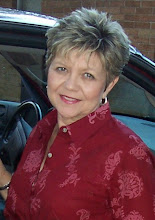Need a gift for the holidays? Cathy’s devotional book The Stained Glass Pickup is a thoughtful gift that will continue to encourage throughout the year. Read reviews at Amazon and www.christianbooks.com Autographed copies available at www.stainedglasspickup.com Cathy will discount purchases of two or more – for details contact Cathy Messecar at writecat@consolidated.net
Christian Women Online Magazine is encouraging their readers to begin a list of 1000 gifts from God. Ann Voskamp, author of the article, wrote “I am daily jotting down items on my ‘Thousand Gifts List.’"
Ms. Voskamp says the discipline of writing down her gifts is opening her eyes to things unseen before. She is “working, one-by-one, up to a thousand gifts. Not of gifts I want. But of gifts I have.”
I liked her idea and started my list a few days before Thanksgiving. The first 25 are family and friends and in that mix, near the end, is a warm bed and a place to shower — such luxuries. Over the years, my list will grow.
A home-schooling mother (nearly a dozen children) has taken the challenge and appearing on her list are such blessings as “fluffy towels, the cry of a newborn, and gathering warm eggs.” She also lists “old books discovered for pennies at a garage sale and the still small voice of God.”
Gratitude is the warm friendly feeling toward a benefactor, thankfulness because God or a person bestowed kindness. Melodie Beattie said, “Gratitude unlocks the fullness of life. It turns what we have into enough, and more.” Also, she said, “Gratitude makes sense of our past, brings peace for today and creates a vision for tomorrow.” The first American settlers had the same attitude.
H. U. Westermayer writes, “The Pilgrims made seven times more graves than huts. No Americans have been more impoverished than these who, nevertheless, set aside a day of thanksgiving.”
God, the ultimate benefactor, told Moses about himself: “The LORD, the LORD, the compassionate and gracious God, slow to anger, abounding in love and faithfulness, maintaining love to thousands, and forgiving wickedness and sin” (Exodus 34:7).
Ms. Voskamp says she is writing down her gifts “as they happen, as they arrive, as they are unwrapped . . . the daily graces that He gives in an infinite number of ways that stir me.”
I’m thankful for readers of this column and you’re number 21 on my list of tailored blessings. On Monday, I’ll pack away the Pilgrim and turkey trinkets, but I will not shelve appreciation.
Join me in keeping Thanksgiving alive year round with a Thousand Gifts List. Are you ready? Number one, number two . . .
You may contact Cathy at www.stainedglasspickup.com
Helping out a friend: Joan Anderson, author of New York Times bestseller Where Angels Walk, has lost some of her mailing list. To sign up for her newsletter, contact her at www.joanwanderson.com
Friday, November 24, 2006
Friday, November 17, 2006
Family Table Time
The Kitchen Table
A friend told me about her paratrooper cousin. During practice, all went well and his chute opened, but the next man didn’t have that good fortune. His chute failed to open. Somehow, he managed to grab hold of the cousin’s legs, and they landed in-tact under one parachute.
The kitchen table is a parachute for the family. Do you remember the kitchen or dining table in your childhood home? The evening meal is when my family ate together. The television was off, and after Dad prayed, we ate and shared the happenings in our days.
We often had orphans at the table, someone who had latched onto our family. Not necessarily persons without parents, just those needing a temporary home. We hosted a woman receiving treatments at M D Anderson Hospital and our grandmothers for extended visits.
Often, though, we had neighborhood kids and parentless children at the table. Rare, but two of my best friends were motherless, one killed in an automobile accident and the other taken by cancer. To this day when I see these two women, they mention our kitchen, and specific foods eaten there. One remembers the Russian salad dressing.
Today, home meals are sacrificed on the altar of busyness. Single parents are making a living and rearing children. In some dad-and-mom families, both parents work, besides chauffeuring kiddos to a plethora of activities. Too many family meals are eaten at 55 mph, fast foods eaten in minivan bucket seats.
The National Center on Substance and Drug Abuse lists ten positive results for families who regularly eat together at home. They can be found online. To help recapture family time around the table, follow this advice: One, clear off the table. Make it inviting. Find other places for school projects, junk mail and laptop computer. Shoo the napping cat from the table surface.
Second, on the weekend, plan the week’s menu and dining times. Buy ingredients, and prominently post menu and meal times. Third, during your together-meal, turn off electronics and have light-conversation. Don’t nag. Instead, say “only what is helpful for building others up according to their needs” (Eph. 4:20).
Fourth, in your prayer time, briefly roll-call the names of those gathered, giving thanks for their presence. Fifth, serve a light dessert and keep family and guests at the table a few more moments. Keep dessert simple. Serve fresh fruit or angel food cake with chocolate whipped cream.
In your home, bring back family meal time. Someone could be descending without a parachute and your table-time may rescue a precious child or the gathered “orphans.” Happy Thanksgiving!
You may contact Cathy at www.stainedglasspickup.com
Friday, November 10, 2006
The Face is a Lamp
“Omore taya.” It’s a Luo proverb. Luo is the second-most spoken language in Kenya. Cecil Murphey, co-author of 90 Minutes in Heaven, often heard the phrase while he was a missionary in Africa. Cecil is a smiling, compassionate man, and his love for others naturally shines through his countenance. So, the Kenyans often shouted at him, “Omore taya” meaning “A happy face is a lamp.”
The Online Etymology Dictionary says the word “countenance” means a "facial expression betraying a state of mind." As a very amateur photographer, I’m always delighted when I’ve captured an expression of one of my grandchildren that matches their heart-personalities.
Our family has a face-mood puzzel. The children have jig-sawed it together again and again. It depicts dramatic moods that alter the landscape of a face. The cardboard pieces show faces that are happy, sad, angry, frightened, worried, embarrassed, bored, silly, and tired.
The Bible has a lot to say about faces: “Cain was very angry” with his brother Able—ready to murder him—and he had a “downcast” face (Genesis 4:5). Joseph saw his brothers for the first time in many years, but they didn’t recognize him. Overcome, Joseph left the room, washed his face, and gained control over his emotions (Genesis 43:31). Moses’ face was radiant after being in the presence of God (Exodus 34:29).
The first Christian martyr Stephen looked at his false accusers and they saw that his face was like the “face of an angel” (Acts 6:15). Quite a few times, Jesus’ face is described as “the sun shining in all its brilliance” (Revelation 1:16).
Need a facelift? Spend time with God reading the Bible or kneeling in prayer, and like missionary Cecil Murphey gift your companions with the sight of a face lit from within.
This week as many of you make early preparations for the coming holidays with family, enjoy this blessing: “The LORD bless you and keep you; the LORD make his face shine upon you and be gracious to you: the LORD turn his face toward you and give you peace” (Numbers 6:24-26).
You may contact Cathy at http://www.stainedglasspickup.com/
The Online Etymology Dictionary says the word “countenance” means a "facial expression betraying a state of mind." As a very amateur photographer, I’m always delighted when I’ve captured an expression of one of my grandchildren that matches their heart-personalities.
Our family has a face-mood puzzel. The children have jig-sawed it together again and again. It depicts dramatic moods that alter the landscape of a face. The cardboard pieces show faces that are happy, sad, angry, frightened, worried, embarrassed, bored, silly, and tired.
The Bible has a lot to say about faces: “Cain was very angry” with his brother Able—ready to murder him—and he had a “downcast” face (Genesis 4:5). Joseph saw his brothers for the first time in many years, but they didn’t recognize him. Overcome, Joseph left the room, washed his face, and gained control over his emotions (Genesis 43:31). Moses’ face was radiant after being in the presence of God (Exodus 34:29).
The first Christian martyr Stephen looked at his false accusers and they saw that his face was like the “face of an angel” (Acts 6:15). Quite a few times, Jesus’ face is described as “the sun shining in all its brilliance” (Revelation 1:16).
Need a facelift? Spend time with God reading the Bible or kneeling in prayer, and like missionary Cecil Murphey gift your companions with the sight of a face lit from within.
This week as many of you make early preparations for the coming holidays with family, enjoy this blessing: “The LORD bless you and keep you; the LORD make his face shine upon you and be gracious to you: the LORD turn his face toward you and give you peace” (Numbers 6:24-26).
You may contact Cathy at http://www.stainedglasspickup.com/
Thursday, November 02, 2006
People Everywhere
When my children were young, each week for a year, my mom and dad sent them a Bible lesson. The Bible based lessons taught such things as treating neighbors with respect. With the steadily rising world population, families will have more opportunities to guide the next generation to love their neighbors.
The United States populace reached 300 million about mid-year. Statisticians aren’t sure of the exact moment. Finding baby number 300 million would be as difficult as looking for a unique grain of sand. Somewhere, little child, you’re it. But, you’ll probably never know you were the milestone-kid.
In 1915, this country reached 100 million. In 1967, we doubled our family tree. Branches sprouted from Boston to Bakersville. The sheer numbers along with advancements in health care have changed the demographics of this nation.
What do all of the statistics have to do with the local church? A lot. Many churches are experiencing phenomenal growth among their young families. Someone is having all those babies. My congregation’s nursery program doubled in size in the last few years, creating more teachable moments for parents and Sunday school teachers to instill passion for God.
For a person born in 1915, the expected life span was 54.5. However, if you were born in 1967, your life expectancy could reach 70.5. Babies arriving in 2006 are very likely to reach the age of 77.8. What does the aging population have to do with church? Plenty.
Over 12 percent of the American population is over the age of 65, around 37 million senior citizens. Because of longevity, churches have broader experienced-based knowledge than ever before. Paul knew the aged are capable of passing along valuable insights. He wrote to young preacher Titus saying, “teach the older women to be reverent in the way they live. In turn, the mature women were to teach “the younger women to love their husbands and children” (Titus 2:3-5).
This can happen between a mother and daughter or other familial connections, or it can occur in church classrooms. A couple of young women meet around my kitchen table once a week, and we study, pray, and talk about all our struggles and successes. Paul knew the best way to “catch” life-lessons is from someone who has counted a few birthdays. Been there. Done that.
Men are not exempt from Paul’s guidelines for mentors. He wanted older gentlemen to be “temperate, worthy of respect, self-controlled, and sound in faith, in love and in endurance.” To the young men he urged self-control and that the young Titus would set a good example for them (2:2, 6-7).
The World Population Clock at the United States Census Bureau Website says 6 and a half billion people inhabit Earth. By 2050 that number will rise to 9 billion—more relatives, more neighbors, more mentors, more young ones to teach. Are you ready to “love your neighbor as yourself”? (Matthew 19:19).
Barbara Barr had a Habitat for Humanity project going on next door and she said: “Oh happy day, that is what comes to my mind when I think of Habitat for Humanity. I have envisioned the day when others would care about our neighborhood as much as we do. As I am listening to your hammers and saws and your laughter, I am filled with hope."
You may contact Cathy at www.stainedglasspickup.com
The United States populace reached 300 million about mid-year. Statisticians aren’t sure of the exact moment. Finding baby number 300 million would be as difficult as looking for a unique grain of sand. Somewhere, little child, you’re it. But, you’ll probably never know you were the milestone-kid.
In 1915, this country reached 100 million. In 1967, we doubled our family tree. Branches sprouted from Boston to Bakersville. The sheer numbers along with advancements in health care have changed the demographics of this nation.
What do all of the statistics have to do with the local church? A lot. Many churches are experiencing phenomenal growth among their young families. Someone is having all those babies. My congregation’s nursery program doubled in size in the last few years, creating more teachable moments for parents and Sunday school teachers to instill passion for God.
For a person born in 1915, the expected life span was 54.5. However, if you were born in 1967, your life expectancy could reach 70.5. Babies arriving in 2006 are very likely to reach the age of 77.8. What does the aging population have to do with church? Plenty.
Over 12 percent of the American population is over the age of 65, around 37 million senior citizens. Because of longevity, churches have broader experienced-based knowledge than ever before. Paul knew the aged are capable of passing along valuable insights. He wrote to young preacher Titus saying, “teach the older women to be reverent in the way they live. In turn, the mature women were to teach “the younger women to love their husbands and children” (Titus 2:3-5).
This can happen between a mother and daughter or other familial connections, or it can occur in church classrooms. A couple of young women meet around my kitchen table once a week, and we study, pray, and talk about all our struggles and successes. Paul knew the best way to “catch” life-lessons is from someone who has counted a few birthdays. Been there. Done that.
Men are not exempt from Paul’s guidelines for mentors. He wanted older gentlemen to be “temperate, worthy of respect, self-controlled, and sound in faith, in love and in endurance.” To the young men he urged self-control and that the young Titus would set a good example for them (2:2, 6-7).
The World Population Clock at the United States Census Bureau Website says 6 and a half billion people inhabit Earth. By 2050 that number will rise to 9 billion—more relatives, more neighbors, more mentors, more young ones to teach. Are you ready to “love your neighbor as yourself”? (Matthew 19:19).
Barbara Barr had a Habitat for Humanity project going on next door and she said: “Oh happy day, that is what comes to my mind when I think of Habitat for Humanity. I have envisioned the day when others would care about our neighborhood as much as we do. As I am listening to your hammers and saws and your laughter, I am filled with hope."
You may contact Cathy at www.stainedglasspickup.com
Subscribe to:
Comments (Atom)








